Abstract
Seventeen patients with Dupuytren's contracture underwent partial fasciectomy, and frozen tissue sections from the involved palmar fascia were prepared for binding studies with hybridoma-derived murine monoclonal antibodies (MoAb) recognizing connective tissue differentiation antigens. The two MoAb used were both generated using human sarcomas as immunizing agents, 23H7 known to bind to an antigen shared by selected sarcomas and carcinomas but not normal adult tissues except a subset of granulocytes, and 12C9 shown to recognize a common fibroblastic marker. MoAb 23H7 was discovered to bind to a subset of fibroblasts within the lesions of six of 17 patients with Dupuytren's disease. Occasionally it immunostained a single cell population associated with tissue granulocytes dispersed in the surroundings of the lesions. MoAb 12C9 was found to be expressed in only 12 of 17 specimens prepared from involved lesions from Dupuytren's disease. It is suggested that fibroblasts from selected patients with Dupuytren's contracture express a novel antigen, defined by MoAb 23H7, previously shown to be associated with human sarcomas and other neoplasia. The other fibroblast marker which is defined by MoAb 12C9 and known to be a common connective tissue antigen, is only occasionally expressed in lesions involved with this disease. Though additional markers associated with Dupuytren's contracture remain to be defined, the MoAb, capable of defining connective tissue differentiation markers, reported in this study may serve as new immunological probes for immunodissecting this syndrome into subsets of diseases which may better define the variety of clinical patterns presented by patients.
Full text
PDF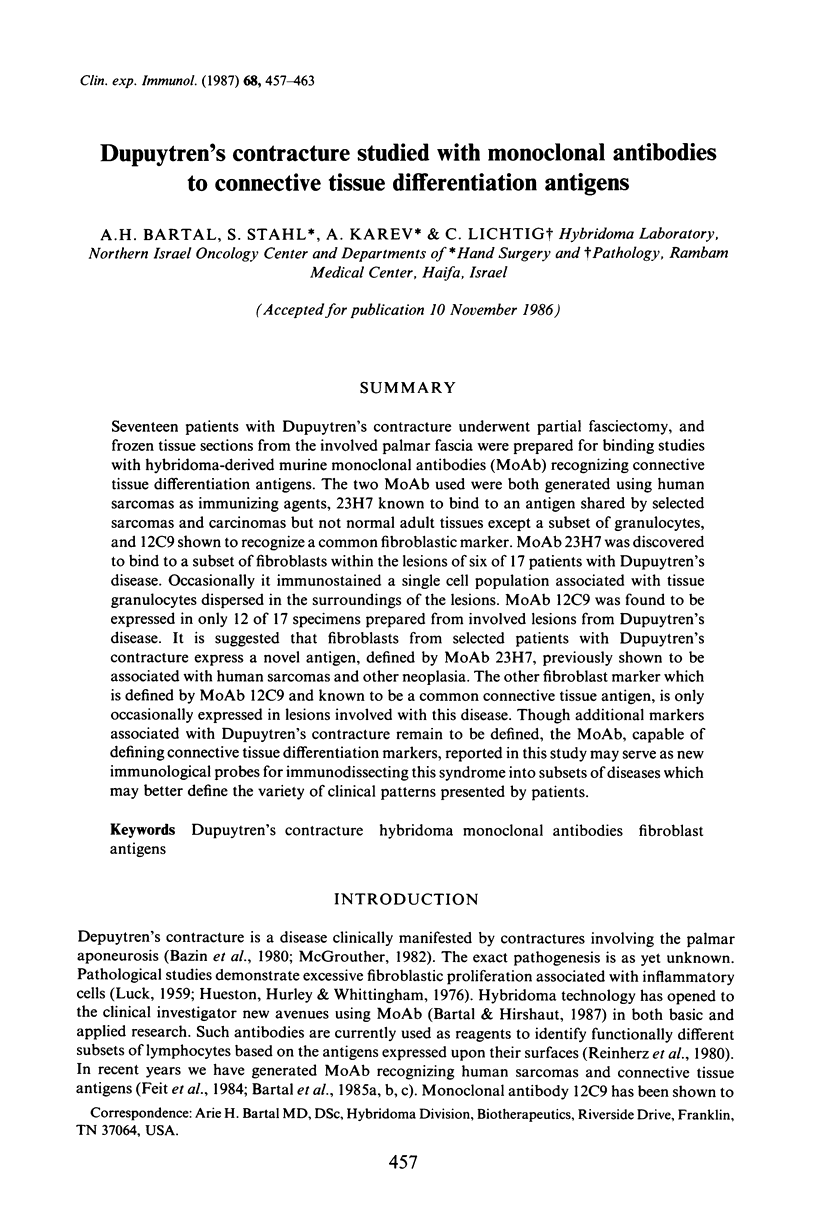
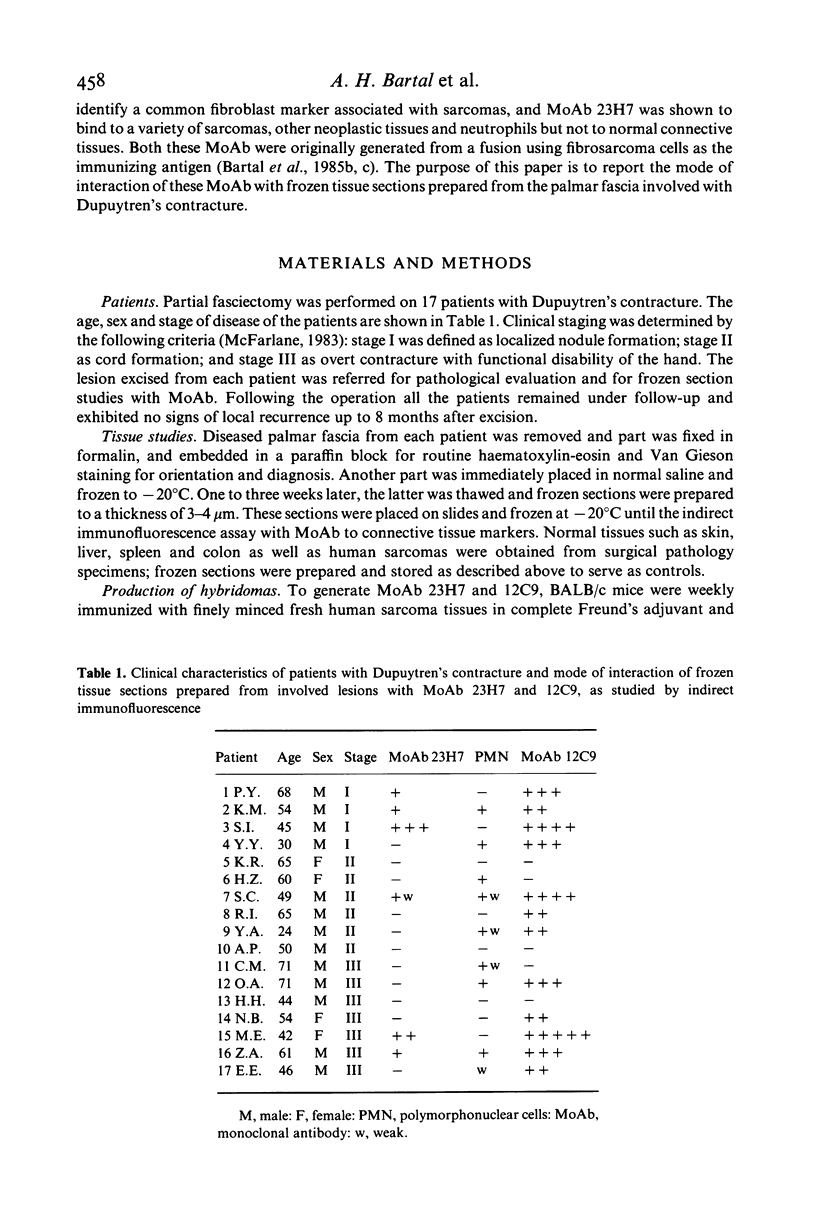
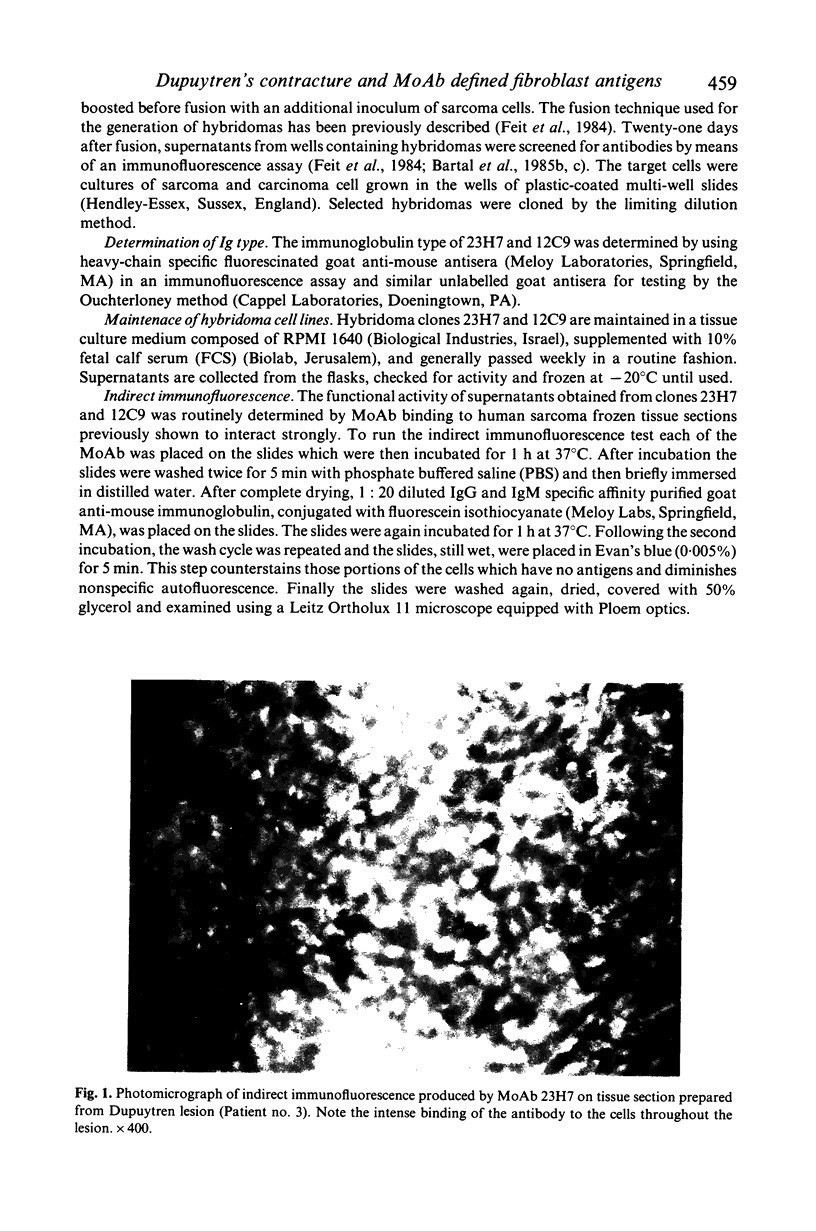
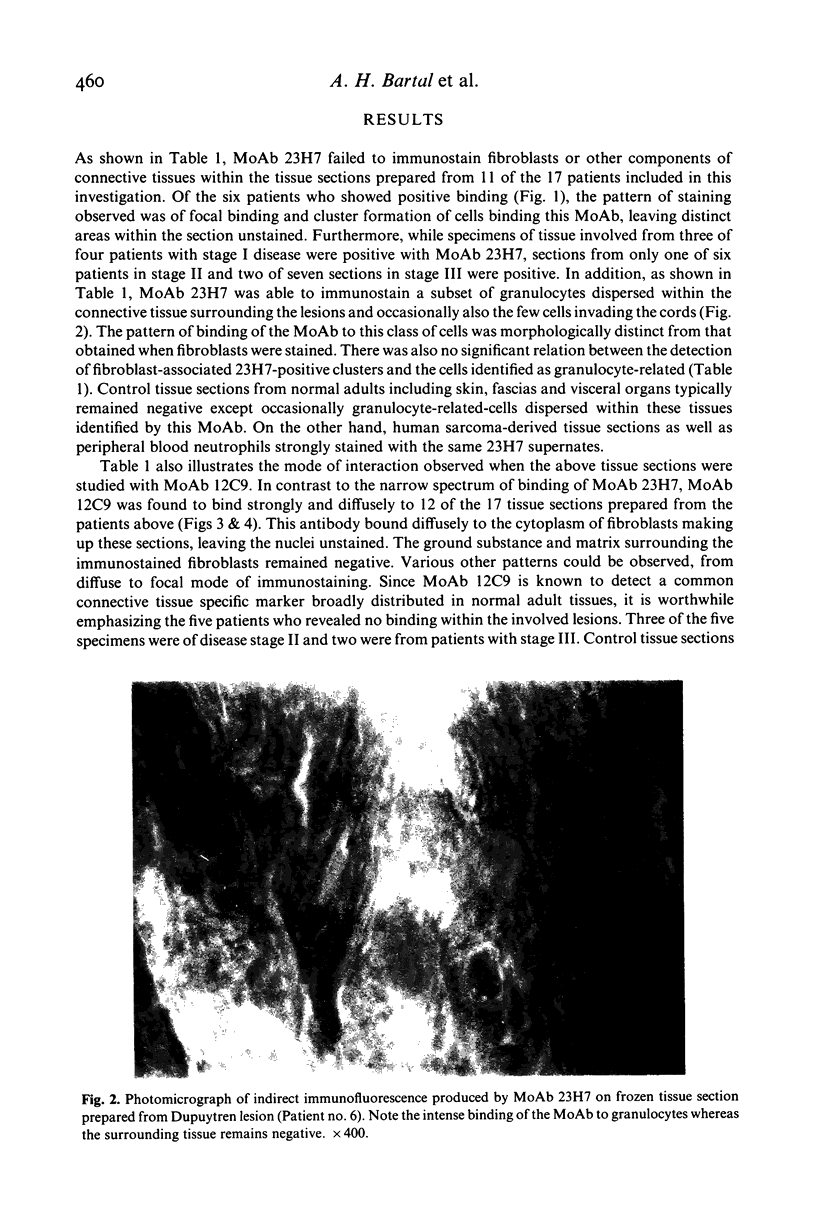
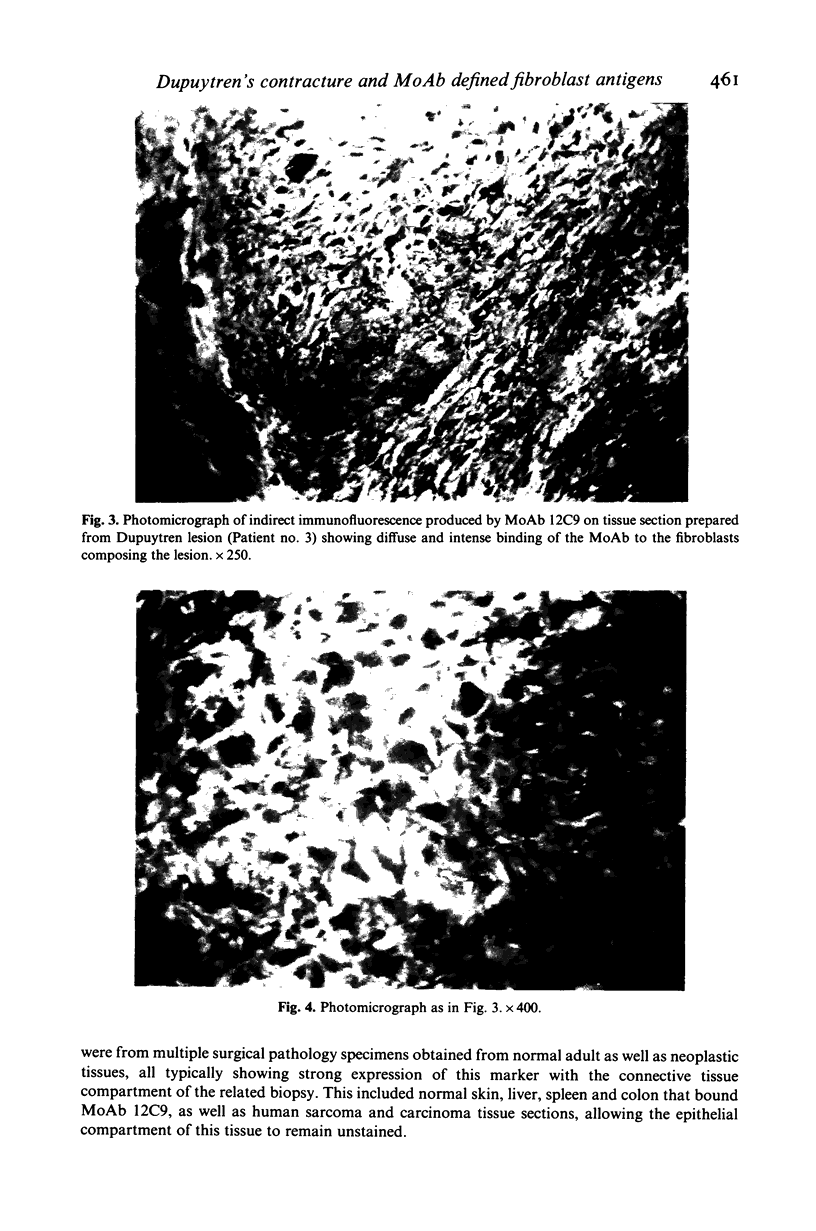
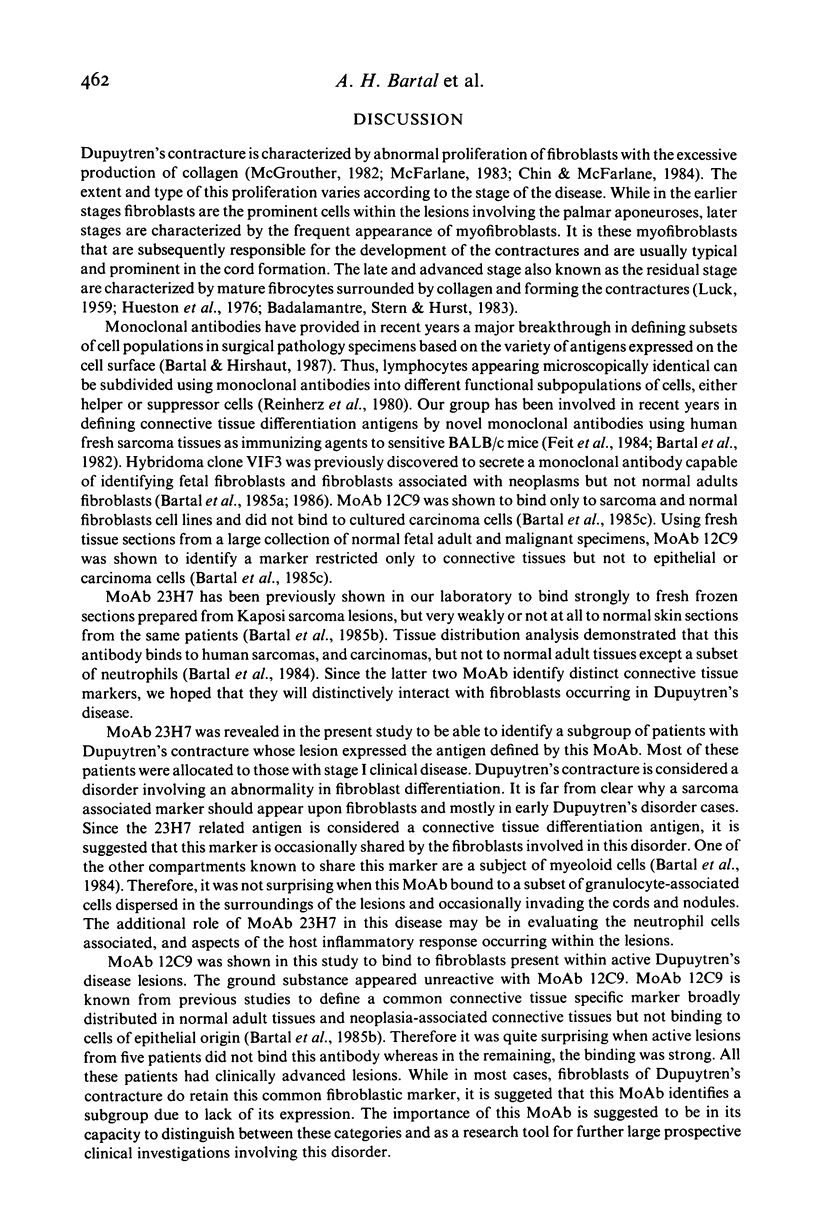
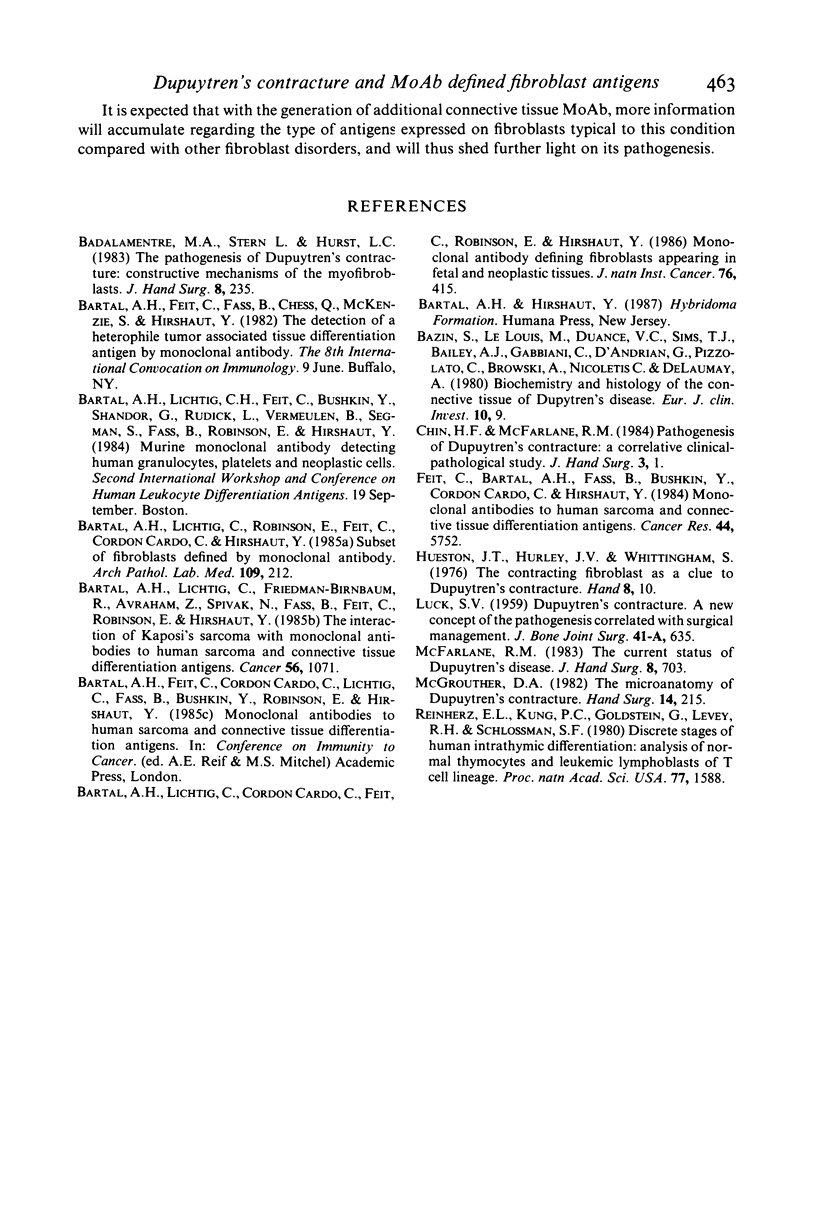
Images in this article
Selected References
These references are in PubMed. This may not be the complete list of references from this article.
- Badalamente M. A., Stern L., Hurst L. C. The pathogenesis of Dupuytren's contracture: contractile mechanisms of the myofibroblasts. J Hand Surg Am. 1983 May;8(3):235–243. doi: 10.1016/s0363-5023(83)80150-6. [DOI] [PubMed] [Google Scholar]
- Bartal A. H., Lichtig C., Cardo C. C., Feit C., Robinson E., Hirshaut Y. Monoclonal antibody defining fibroblasts appearing in fetal and neoplastic tissues. J Natl Cancer Inst. 1986 Mar;76(3):415–421. [PubMed] [Google Scholar]
- Bartal A. H., Lichtig C., Friedman-Birnbaum R., Avraham Z., Spivak N., Fass B., Feit C., Robinson E., Hirshaut Y. The interaction of Kaposi's sarcoma with monoclonal antibodies to human sarcoma and connective tissue differentiation antigens. Cancer. 1985 Sep 1;56(5):1071–1074. doi: 10.1002/1097-0142(19850901)56:5<1071::aid-cncr2820560518>3.0.co;2-5. [DOI] [PubMed] [Google Scholar]
- Bartal A. H., Lichtig C., Robinson E., Feit C., Cardo C. C., Hirshaut Y. Subset of fibroblasts defined by monoclonal antibody. Arch Pathol Lab Med. 1985 Mar;109(3):212–213. [PubMed] [Google Scholar]
- Bazin S., Le Lous M., Duance V. C., Sims T. J., Bailey A. J., Gabbiani G., D'Andiran G., Pizzolato G., Browski A., Nicoletis C. Biochemistry and histology of the connective tissue of Dupuytren's disease lesions. Eur J Clin Invest. 1980 Feb;10(1):9–16. doi: 10.1111/j.1365-2362.1980.tb00003.x. [DOI] [PubMed] [Google Scholar]
- Chiu H. F., McFarlane R. M. Pathogenesis of Dupuytren's contracture: a correlative clinical-pathological study. J Hand Surg Am. 1978 Jan;3(1):1–10. doi: 10.1016/s0363-5023(78)80112-9. [DOI] [PubMed] [Google Scholar]
- Feit C., Bartal A. H., Fass B., Bushkin Y., Cardo C. C., Hirshaut Y. Monoclonal antibodies to human sarcoma and connective tissue differentiation antigens. Cancer Res. 1984 Dec;44(12 Pt 1):5752–5756. [PubMed] [Google Scholar]
- Hueston J. T., Hurley J. V., Whittingham S. The contracting fibroblast as a clue to Dupuytren's contracture. Hand. 1976 Feb;8(1):10–12. doi: 10.1016/0072-968x(76)90052-8. [DOI] [PubMed] [Google Scholar]
- LUCK J. V. Dupuytren's contracture; a new concept of the pathogenesis correlated with surgical management. J Bone Joint Surg Am. 1959 Jun;41-A(4):635–664. [PubMed] [Google Scholar]
- McFarlane R. M. The current status of Dupuytren's disease. J Hand Surg Am. 1983 Sep;8(5 Pt 2):703–708. doi: 10.1016/s0363-5023(83)80251-2. [DOI] [PubMed] [Google Scholar]
- McGrouther D. A. The microanatomy of Dupuytren's contracture. Hand. 1982 Oct;14(3):215–236. doi: 10.1016/s0072-968x(82)80055-7. [DOI] [PubMed] [Google Scholar]
- Reinherz E. L., Kung P. C., Goldstein G., Levey R. H., Schlossman S. F. Discrete stages of human intrathymic differentiation: analysis of normal thymocytes and leukemic lymphoblasts of T-cell lineage. Proc Natl Acad Sci U S A. 1980 Mar;77(3):1588–1592. doi: 10.1073/pnas.77.3.1588. [DOI] [PMC free article] [PubMed] [Google Scholar]






